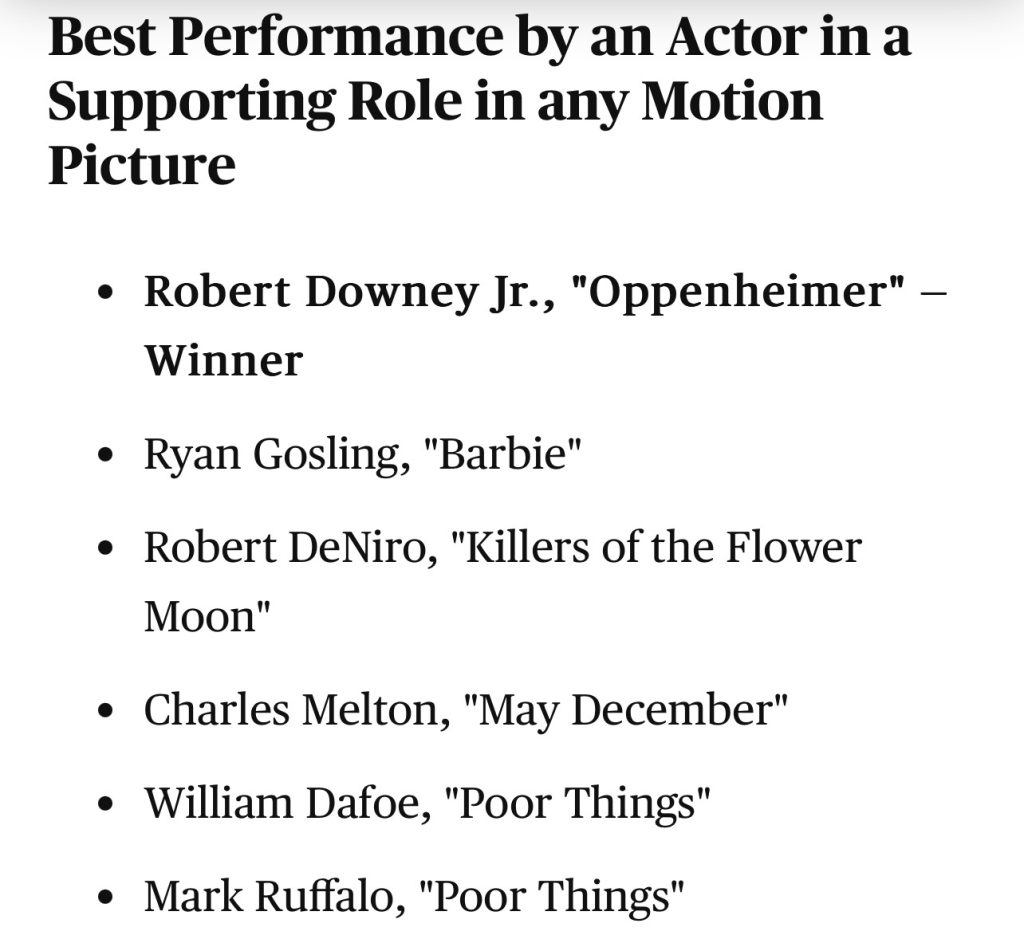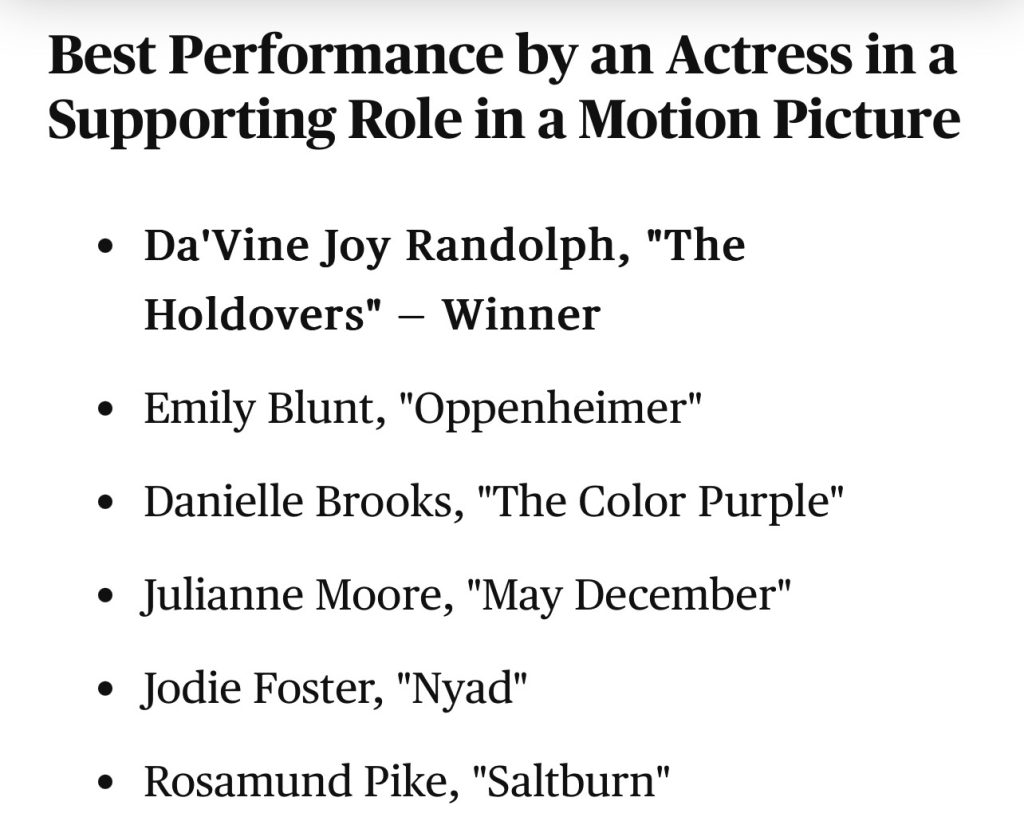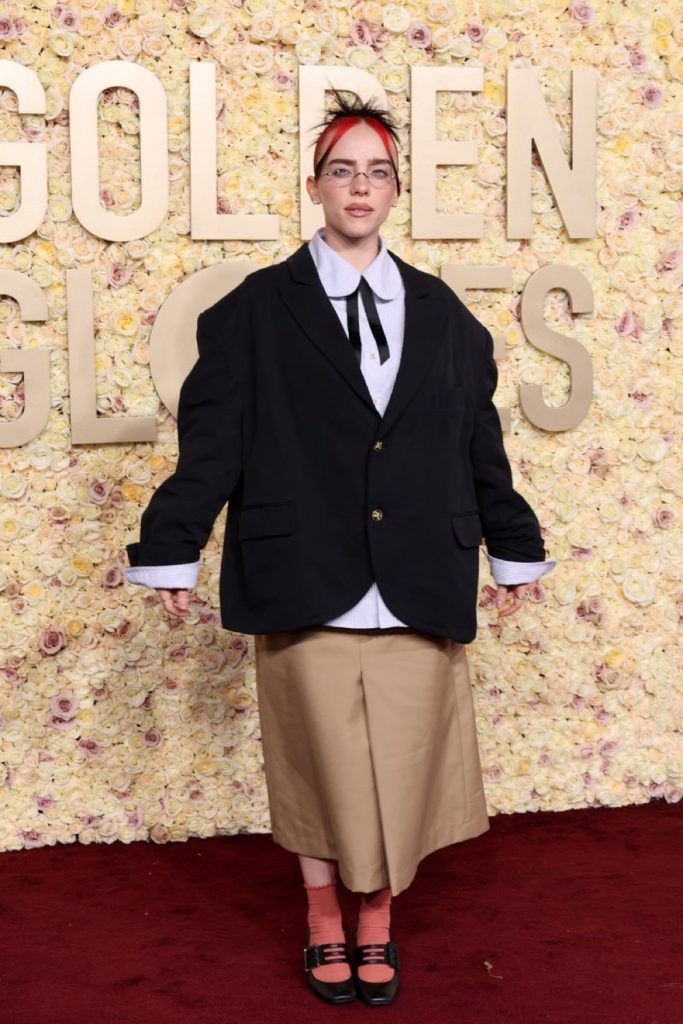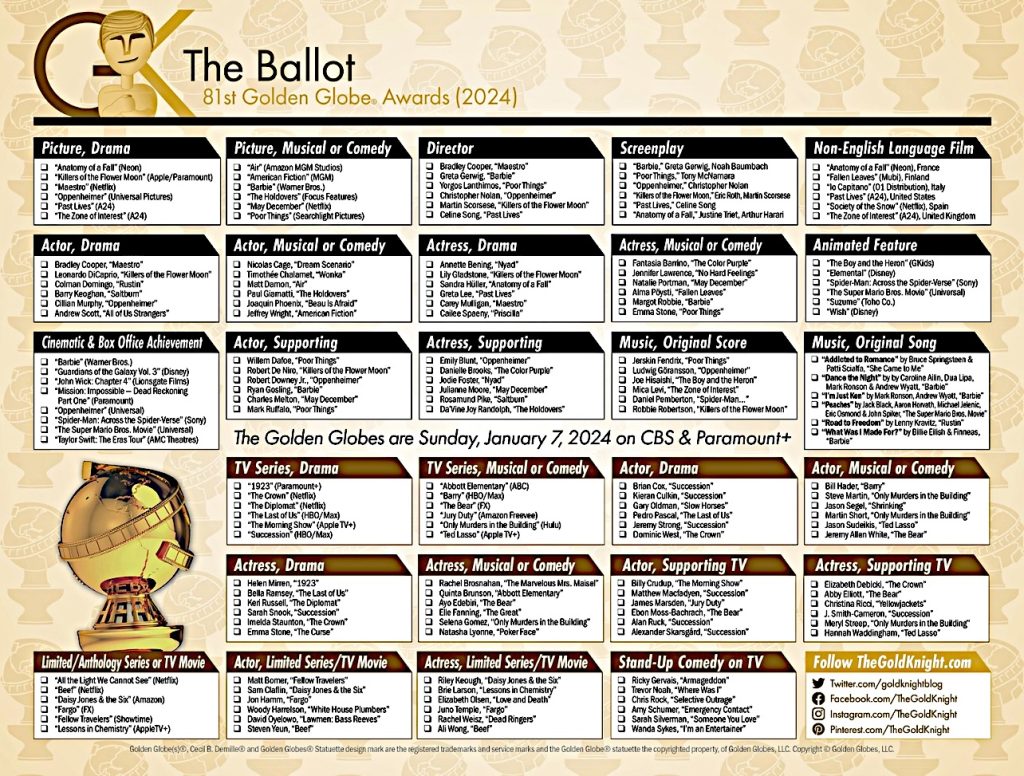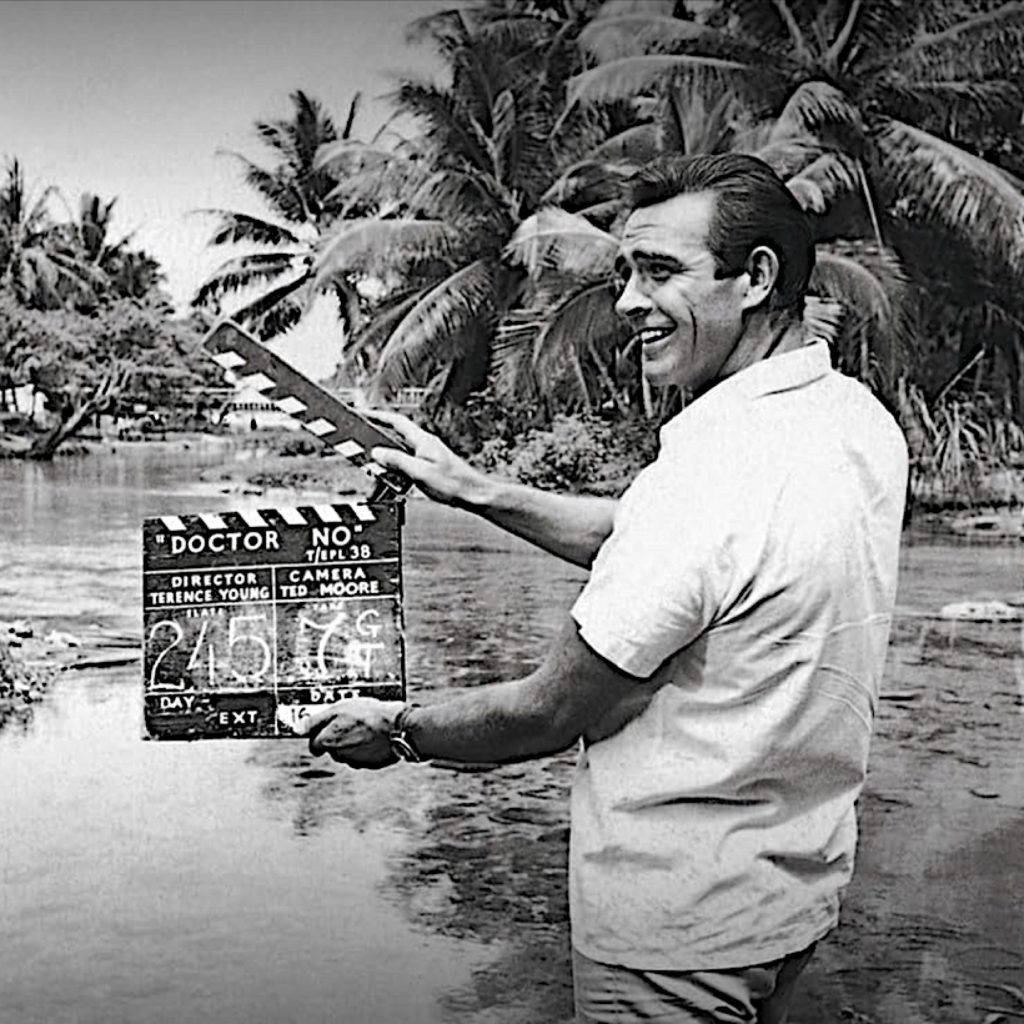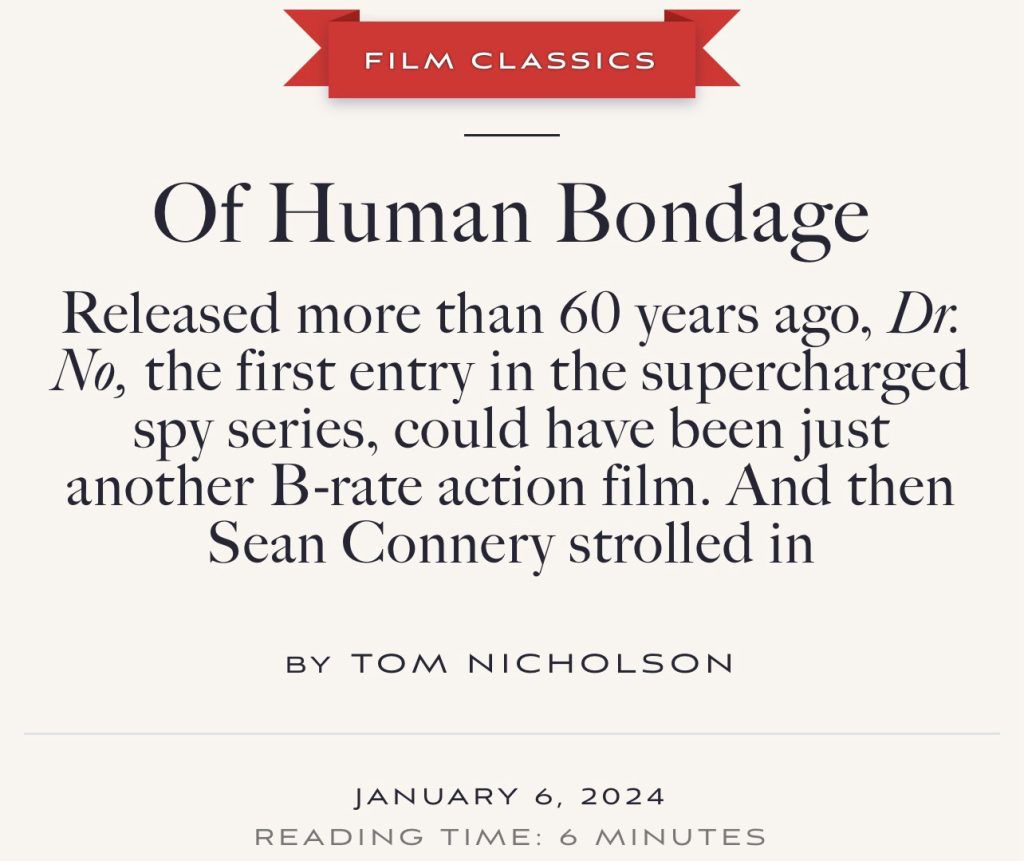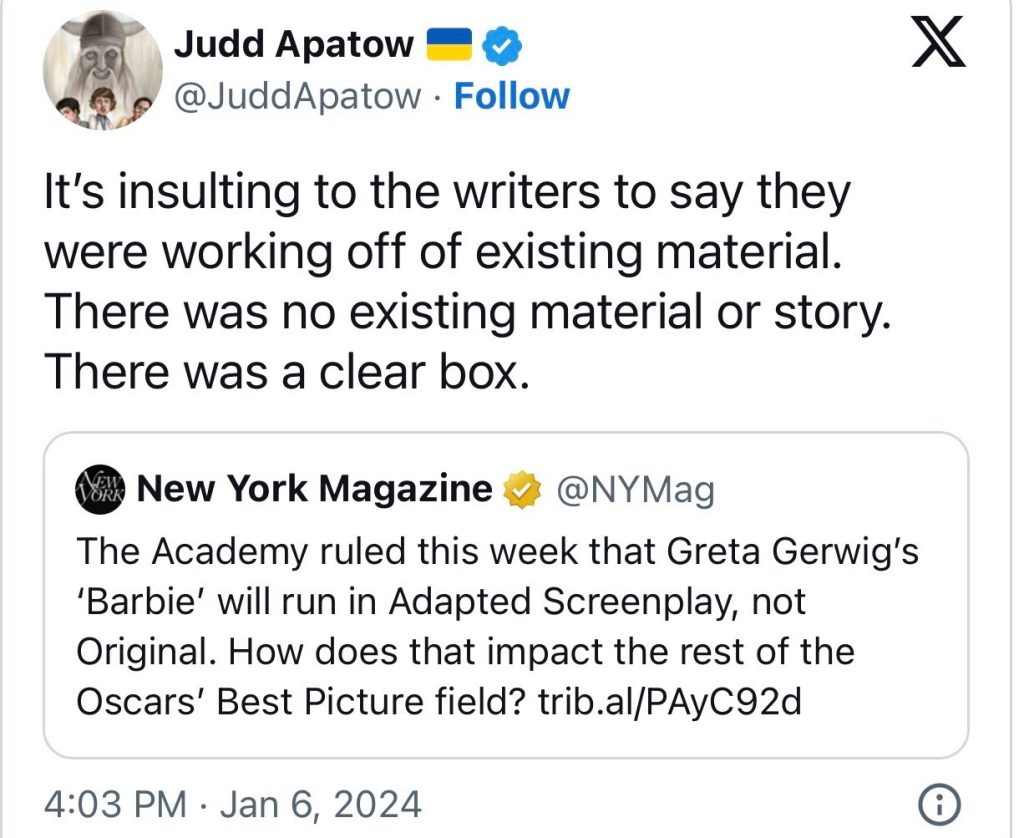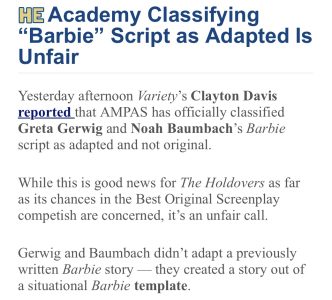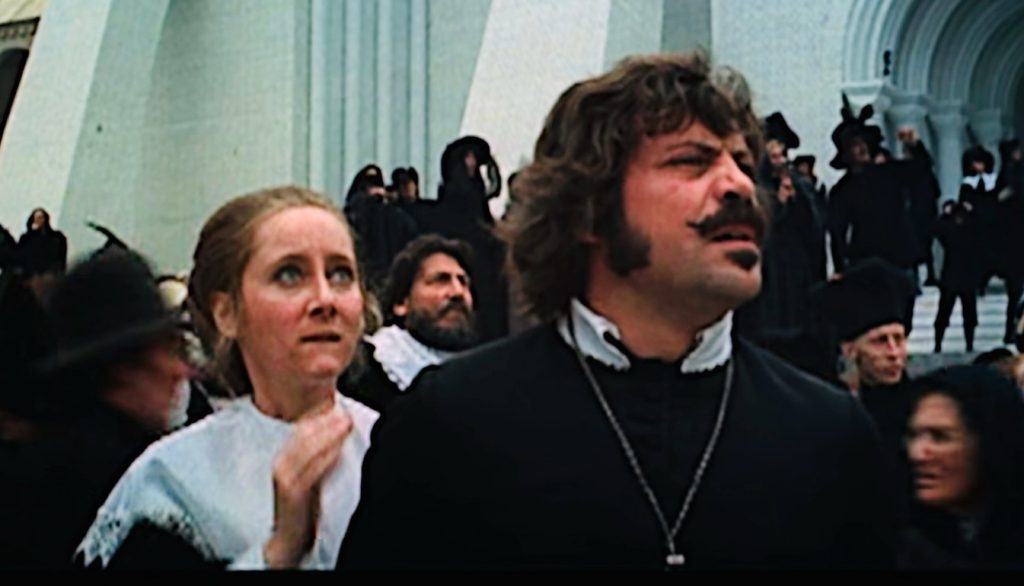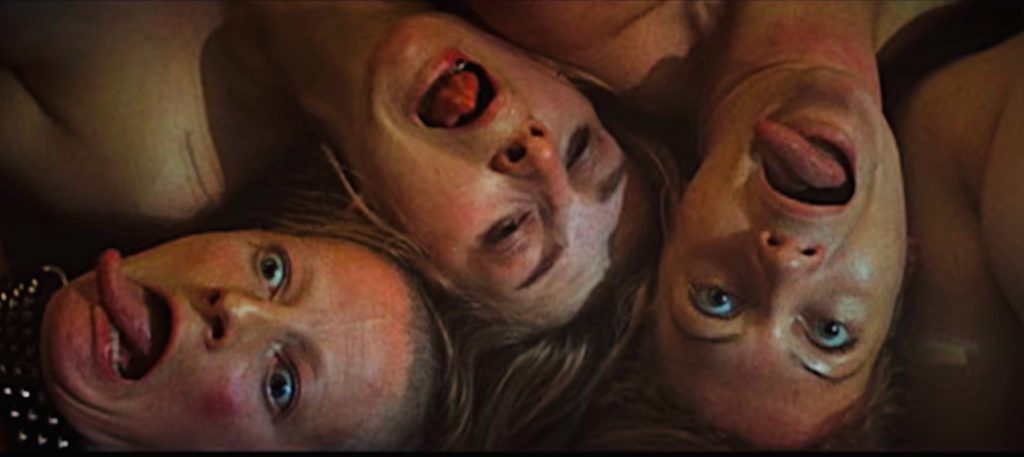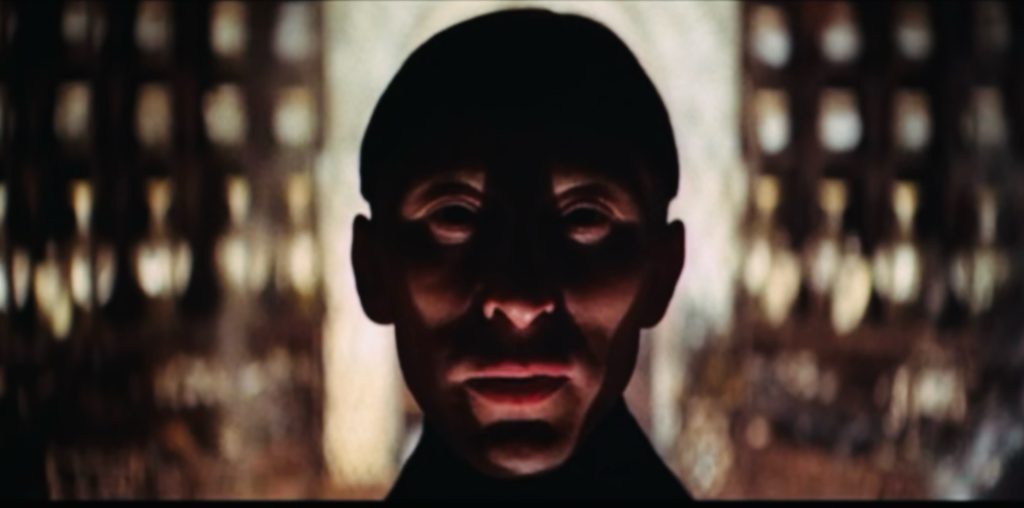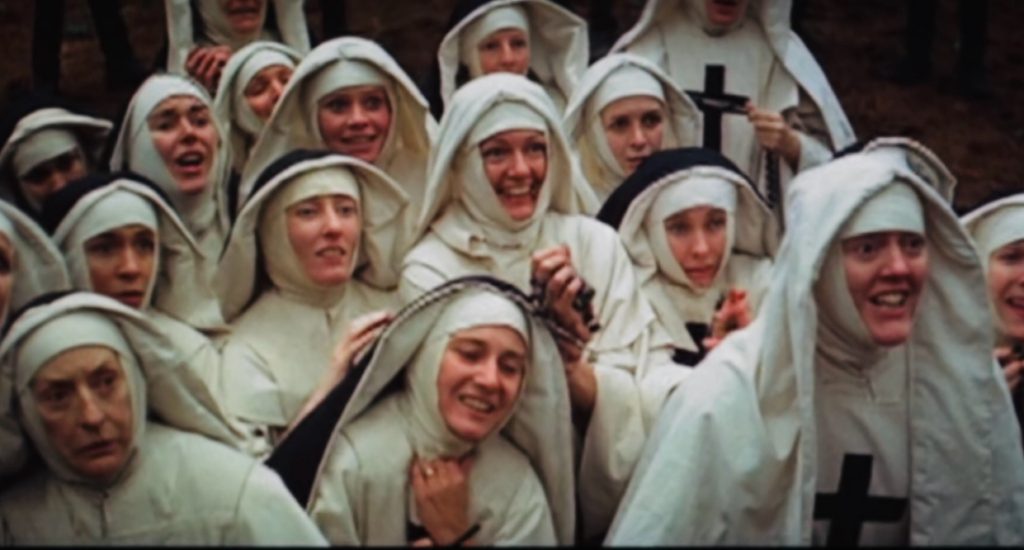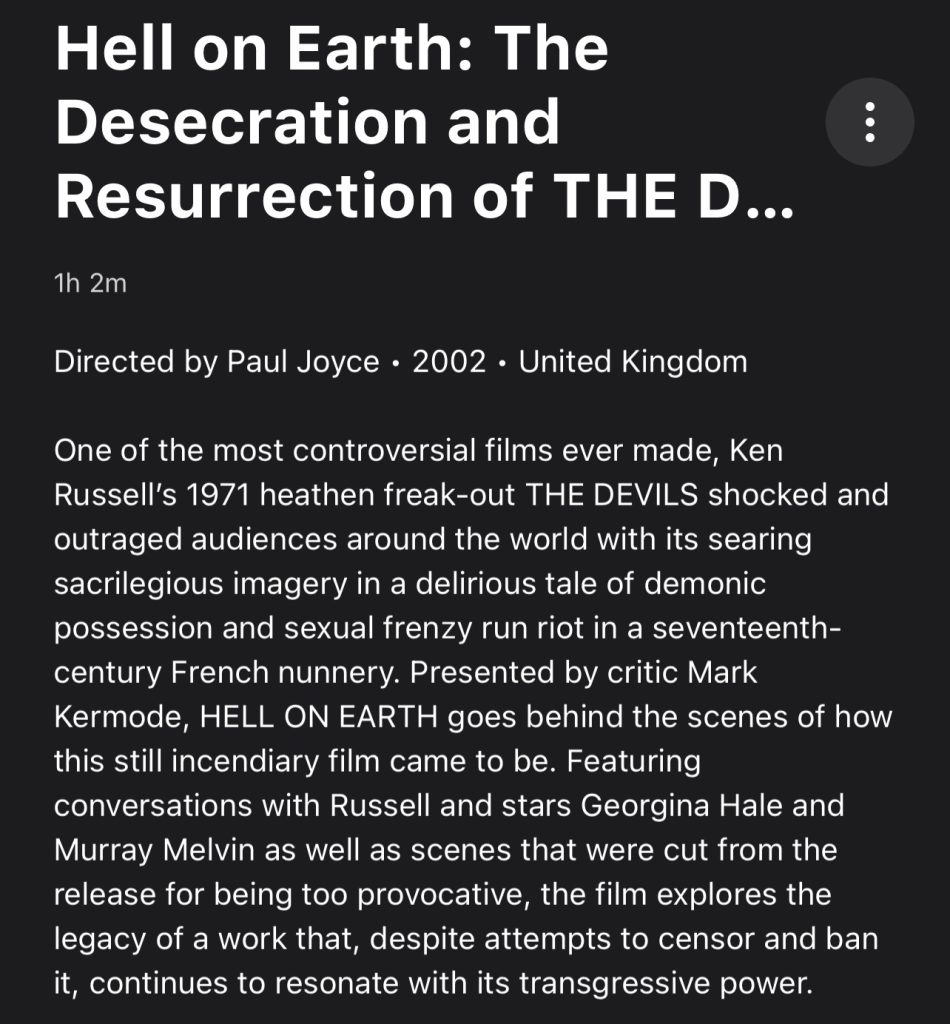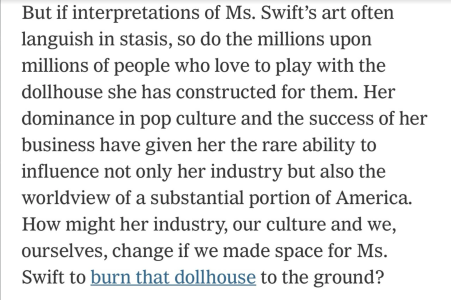With the exception of having handed their Best Supporting Actress trophy to The Holdovers‘ Da’Vine Joy Randolph and having honored Ferrari‘s Penelope Cruz with first-runner-up status, the National Society of Film Critics has voted in a somewhat curious, Planet Neptune sort of way….like the Branch Davidian Spirit Awards.
Celine Song‘s Past Lives has taken the Best Picture prize (51 points)…Scott Feinberg may or may not be rejoicing, but he’s certainly feeling comfortable right now…he and his woke sewing circle friends / Runners-up: THE ZONE OF INTEREST (49 points), OPPENHEIMER (44 points)
Best Director: Jonathan Glazer, THE ZONE OF INTEREST (65 points), Todd Haynes, MAY DECEMBER (42 points), Christopher Nolan, OPPENHEIMER (41 points)
Lily Gladstone didn’t win for Best Actress…fine. But neither did HE’s favorite contender, Poor Things Emma Stone (booo). Instead Anatomy of a Fall“s Sandra Huller has taken the prize. HE is down with this. Huller is a grade-A actress.

Best Screenplay: Samy Burch, MAY DECEMBER (53 points) / Runners-up: Celine Song, PAST LIVES (50 points); David Hemingson, THE HOLDOVERS (36 points)
Best Supporting Actor: Charles Melton, MAY DECEMBER (51 points) / Runners-up: Robert Downey, Jr., OPPENHEIMER, and Ryan Gosling, BARBIE (31 points, tie)
Best Actor: Andrew Scott, ALL OF US STRANGERS (52 points) / Runners-up: Jeffrey Wright, AMERICAN FICTION (39 points), Cillian Murphy, OPPENHEIMER (29 points)
Best Cinematography: Rodrigo Prieto, KILLERS OF THE FLOWER MOON (55 points); Łukasz Żal, THE ZONE OF INTEREST (45 points), Hoyte van Hoytema, OPPENHEIMER (44 points).
Best Supporting Actress: Da’Vine Joy Randolph, THE HOLDOVERS (58 points), Penélope Cruz, FERRARI (32 points), Rachel McAdams, ARE YOU THERE GOD? IT’S ME, MARGARET. (23 points)
Best Actress: Sandra Hüller, ANATOMY OF A FALL and THE ZONE OF INTEREST (61 points); Emma Stone, POOR THINGS (56 points); Lily Gladstone, KILLERS OF THE FLOWER MOON (44 points)



